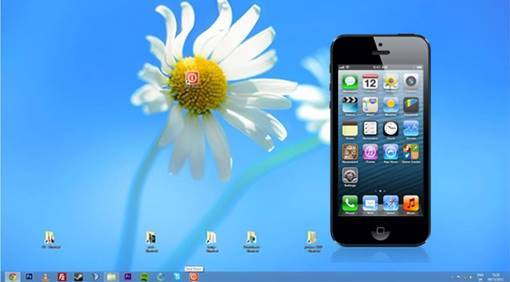- Yes, it’s completely possible. Assuming your VM is set up, open up the Mac App Store. Install Xcode from the Mac App Store, it’s free, but it’s a big download, so make sure you have something to do while it’s downloading.
- The first step is downloading Xcode and installing the iOS simulator on your Mac. Here’s how to install the iOS simulator on your Mac: Download and install Xcode from the Mac App Store. Right click on the Xcode icon in the Applications folder and select Show Package Contents, as shown below. Open the iPhone Simulator application.
- Run Iphone Simulator On Mac Download
- Iphone Emulator For Macbook
- Ipad Emulator For Mac
- Ios Simulator
- Run Iphone Simulator On Mac Computer
Emulators make it easy to run and test iOS apps on Windows PC or Mac. These are especially useful for developers who want to know how a specific app will appear and function on the iPhone and iPad. Emulator software works by replicating Apple’s design, interface, and some limited functionality.
After you have successfully configured your development environment for iOS application development, you can run your Delphi iOS application on the iOS simulator as follows:
- Run the Platform Assistant on the Mac.
- In RAD Studio:
- On the Project Manager, expand the Target Platforms node and double-click the iOS Simulator target platform to activate that platform. The active target platform is displayed using a bold font.
- Expand the iOS Simulator node in the Project Manager, expand the Target node, and double-click a simulator node (iPad, iPhone or iPhone 5) to activate that simulator. The active simulator is displayed using a bold font.
- Run your application, either with debugging (Run > Run) or without debugging (Run > Run Without Debugging).
RAD Studio builds your application for the iOS Simulator, connects to your Mac using the connection profile you assigned to the iOS Simulator platform. The Platform Assistant running on the Mac launches your application on the iOS Simulator.
- Note: RAD Studio might look frozen at some points until it launches your application on the iOS simulator, but it is just preparing to run your application.
The following message is displayed on the development system:
Go to your Mac, where you should see the iOS Simulator running.
- Note: C++Builder does not support running iOS apps on the iOS Simulator, but does support Mobile Preview and the iOS Device.
See Also
How to Archive for iOS simulator?
Usually you won't archive iOS app for simulator use, unless... your client suddenly tell you that his iPhone is broken and undergoing repair, but hey he has a Mac that can run Xcode and also iOS simulator and he still want to test your app! Of course you wouldn't want to send the full source code over before client paid you in full. So how do you send him the build to test without sending the source code over?
As per Apple documentation,
Applications built for the simulator cannot be archived
Fortunately, there's a way to send the compiled build so your client can run the compiled build without him having to build from the source code.
Update (October 2018)
honeyeeb mentioned a faster way that we can use the compiled app in the 'Products' folder, send this to colleague/client and ask them to drag and drop it into iOS Simulator.

After building the app, go to the left side navigator bar, select Products > appName.app, right click it and select 'Show in Finder'.

Run Iphone Simulator On Mac Download
Finder will show the .app file and you can send the file to your colleague / client.
Thanks for the suggestion honeyeeb! 😆
1. Locate your iOS Simulator folder in Finder
Open terminal, and run instruments -s devices , you will see a list of simulator device and their UDID inside square brackets.
I will be using iPhone SE (iOS 11.2) as the selected simulator device for this tutorial, the corresponding UDID for it is '18BF1A2D-15C2-40E2-80A6-0CB87D2B56D4'.

The folder containing the simulator data will be located at~/Library/Developer/CoreSimulator/Devices/[Simulator UDID] .
In Finder, press Command + Shift + G, and enter the path.
2. Build your app and locate its data folder
Before building your app, I recommend deleting all other existing app you have built previously on the simulator so that you can find your app data folder easier in the next step.
Proceed to build your app as usual in Xcode, my app name is 'exampleApp' for this tutorial.
After building, open Finder and proceed to the simulator folder path~/Library/Developer/CoreSimulator/Devices/[Simulator UDID]
Iphone Emulator For Macbook
In your simulator folder, locate to data/Containers/Bundle/Application , here you will see the folder for the apps you have built in the simulator.
To find the folder containing your app, you have to open one by one until you found your app name inside, like this :
Compress the app and send the zip file to your client.
Ipad Emulator For Mac
For easier instruction, ask your client to unzip the compressed file at Desktop folder.
3. Instruction for clients

Below are the instruction for clients:
Open Xcode, then start iOS Simulator by choosing Xcode > Open Developer Tool > Simulator.
In Simulator, select the device you want.
Ios Simulator
Simply drag and drop the app file into the Simulator :
Run Iphone Simulator On Mac Computer
The app should install on the simulator successfully, rejoice!
Send this link to your client for reference if needed : https://fluffy.es/how-to-archive-ios-app-for-simulator/#client